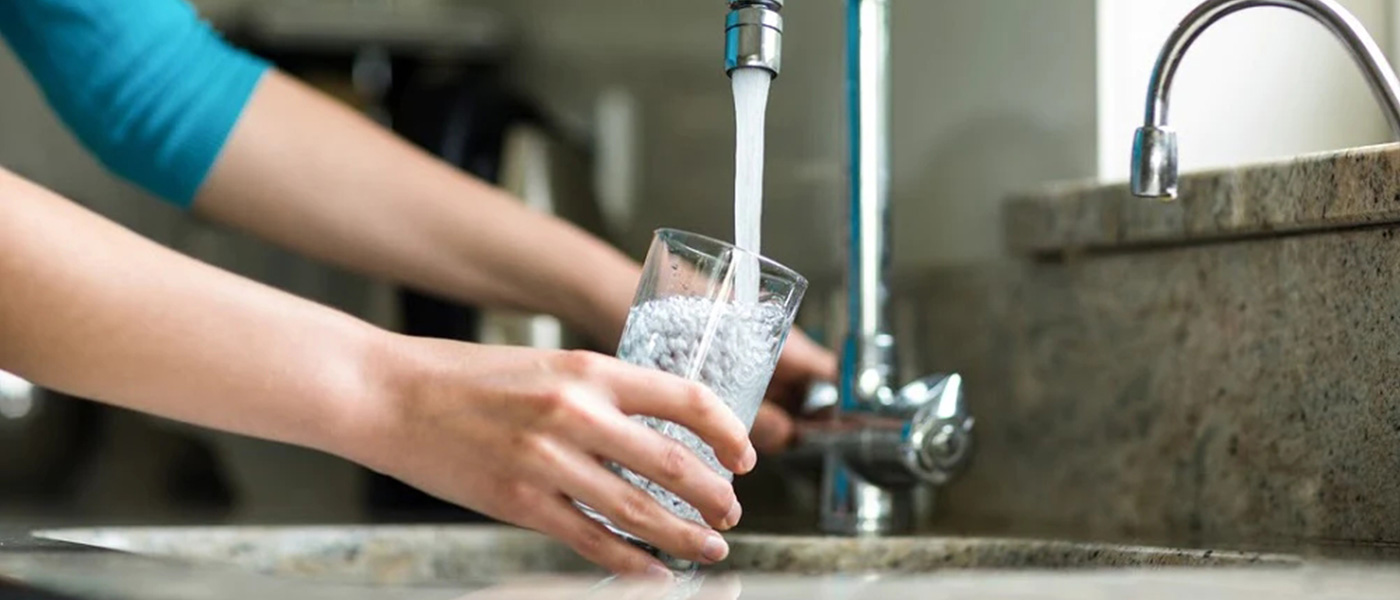Case in Germany: The tap water is needed to filting for direct drinking

Although most tap water in the developed world is safe, much of it is not, just likes in Germany. Inadequate management of urban, industrial, and agricultural wastewater means the drinking-water of hundreds of millions of people is dangerously contaminated or chemically polluted.
Contaminants that may be present in source water include:
Microbial contaminants, such as viruses and bacteria, which may come from sewage treatment plants, septic systems, agricultural livestock operations, and wildlife.
Inorganic contaminants, such as salts and metals, which can be naturally-occurring or result from urban stormwater run-off, industrial or domestic wastewater discharges, oil and gas production, mining, or farming.
Pesticides and herbicides, which may come from a variety of sources such as agriculture, urban stormwater runoff, and residential uses.
Organic chemical contaminants, including synthetic and volatile organic chemicals, which are by-products of industrial processes and petroleum production, and can also come from gas stations, urban stormwater runoff, and septic systems.
Radioactive contaminants, which can be naturally-occurring or be the result of oil and gas production and mining activities.
So, it’s much better to equip a water purifier for your tap water as your direct drinking water.

Common contaminants in tap water
These are some of the chemicals and contaminants that may cause issues:
Pathogens (Bacteria and Viruses)
If you drink raw tap water directly from a small mountain spring it will most likely contain bacteria such as coliform. This is completely normal and unlikely to make you sick in small amounts.
For public tap water supplies however, it’s critical that there is no coliform including e.coli.
Thankfully tap water in developed countries have been treated chlorine, chloramine or ozone to kill all pathogens. In many poor countries pathogens are still a major issue though. In addition to this old and poorly maintained water tanks on buildings and water filters can cause bacteria to grow and contaminate the local drinking water.
Chlorine and chlorine by-products
The most common disinfection method involves some form of chlorine or its compounds such as chloramine or chlorine dioxide. Chlorine is a strong oxidant that rapidly kills many harmful micro-organisms. Because chlorine is a toxic gas, there is a danger of a release associated with its use. This problem is avoided by the use of sodium hypochlorite, which is a relatively inexpensive solution used in household bleach that releases free chlorine when dissolved in water.
Chlorine levels up to 4 milligrams per liter (4 parts per million) are considered safe in drinking water. All forms of chlorine are widely used, despite their respective drawbacks. One drawback is that chlorine from any source reacts with natural organic compounds in the water to form potentially harmful chemical by-products. These by-products, trihalomethanes (THMs) and haloacetic acids (HAAs), are both carcinogenic in large quantities and are regulated by the United States Environmental Protection Agency (EPA), EU and WHO. The formation of THMs and haloacetic acids may be minimized by effective removal of as many organics from the water as possible prior to chlorine addition. Although chlorine is effective in killing bacteria, it also has limited effectiveness against pathogenic protozoa that form cysts in water such as Giardia lamblia and Cryptosporidium.
The OLANSI water purifier will solve all the tap water problem above, ensure that the German family can drink the healthy water.
OLANSI has been founded in 2009, the manufacturer with over 10+ years experience. We are a Professtional water purififer & water dispenser factory, offer global OEM and ODM service. Quick delivery, competitive price, high quality, and long-term service to our clients.
……
If you want a water purififer or water dispenser OEM/ODM service, contact us right now!


